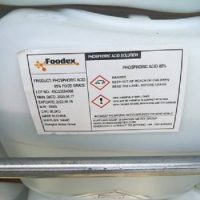Xanthan Gum
- CAS Number: 11138-66-2
- Appearance: Solid
- Purity:%
- Made in: China
- Phone Num : +86-2150591759
- E-mail: info@shanghaimetex.com
- Description
- Product Specification
Description
 Tel:+86-2150591759 Tel:+86-2150591759 |
 PDF Download PDF Download |
 Email: info@shanghaimetex.com Email: info@shanghaimetex.com |
Xanthan is a polysaccharide that is produced by microbial fermentation. Xanthan is an important industrial biopolymer. This compound is widely used in food, pharmaceutical, and health industries.
The use of this polysaccharide in food production increases the viscosity and volume of food and helps to increase the quality of products, for example, this biopolymer is widely used in the production of salad dressings and dairy products, the use of this biopolymer in quantities Low or medium does not have any negative effect on human health.

Xanthan gum is also found in nature, it can be used as a fungicide, herbicide, or insecticide.
Under standard conditions, the appearance of this biopolymer is a white or yellow powder that can dissolve well in water.
The chemical structure of this polysaccharide is as follows:

Using this biopolymer can help control blood sugar levels and prevent tooth decay, which helps treat constipation.
In the following, we will get more acquainted with the physical and chemical properties of this material and its most important applications.
Read more: HEDP
Physical and chemical properties:
The nature of this polysaccharide is such that it can help food products to have higher resistance at different temperatures and levels of acidity and create good stability for the food product.
Consumption of foods that contain this biopolymer can have a positive effect on human health and help to lose weight, lower blood cholesterol and prevent cancer.
The most important physical and chemical properties of xanthan can be summarized in the following table:
| Name | xanthan |
| Molecular weight (g/mol) | 933.748 |
| Density (g/cm3) | 1.5 |
| Melting point (°C) | 3550 |
| Boiling point (°C) | 311 |
| PH | 5 |
| Solubility in water | Completely soluble |
Production of xanthan:
Corn, soy, or sometimes wheat can be very useful sources for the production of xanthan gum, the glucose contained in these natural substances, or in some cases from the lactose in the milk of this biopolymer.
Sugarcane and beets are also substances that can be a good source of this food additive.
Similar product: Xylitol

Xanthan uses and applications:
cosmetic products:
Xanthan is found in much personal care and beauty products; it helps to increase the volume of products and can make these materials easily get out of your dishes. Products that use this biopolymer include toothpaste, lotions, and shampoos.
Paint and resin industries:
This polysaccharide is used in oil and gas and drilling industries as well as paints and resins to increase viscosity and regulate the rheology of products.
Food products:
This gum can improve the texture, consistency, taste, and shelf life of many foods, for example, xanthan is used in the production of juices, bakery products, ice cream, and low-fat foods.

Advantages:
This polysaccharide can play a laxative role, and facilitates digestion, as well as improving constipation and gastrointestinal diseases and helping to cleanse the intestines.
Allowed consumption of xanthan:
According to the World Health Organization (WHO), the permissible amount of xanthan is 10 mg per kilogram of body weight, and using more than this amount can cause general stomach upset, bloating, or diarrhea.
Disease control:
Xanthan generally lowers the body’s glucose levels and can regulate blood sugar, which is a great help to patients suffering from diabetes.
Studies and research have shown that the use of this substance can prevent the motility and growth of cancer cells and be useful in the treatment of cancer.
Substantive to xanthan gum:
Some substances are very similar in appearance or properties to xanthan and can sometimes be a good alternative to it, which include the following:
Corn: Corn has a texture similar to xanthan and can be a substitute for it.
Gelatin, cognac powder, and albumen are also ingredients that have properties similar to this biopolymer and can be used instead.
Safety:
Avoid inhaling the powder of this substance and observe safety measures when working with it.
Storage:
Use cold and dry storage to store this material and keep it away from heat.
PRODUCT DESCRIPTION: Xanthan Gum is a polysaccharide, derived from the bacterial coat of Xanthomonas campestris, used as a food additive and rheology modifier, commonly used as a food thickening agent (in salad dressings, for example) and a stabilizer (in cosmetic products, for example, to prevent ingredients from separating). It is produced by the fermentation of glucose, sucrose, or lactose by the Xanthomonas campestris bacterium.
Product Name: Xanthan Gum
CAS No: 11138-66-2
E Number: E415
Product Specification













